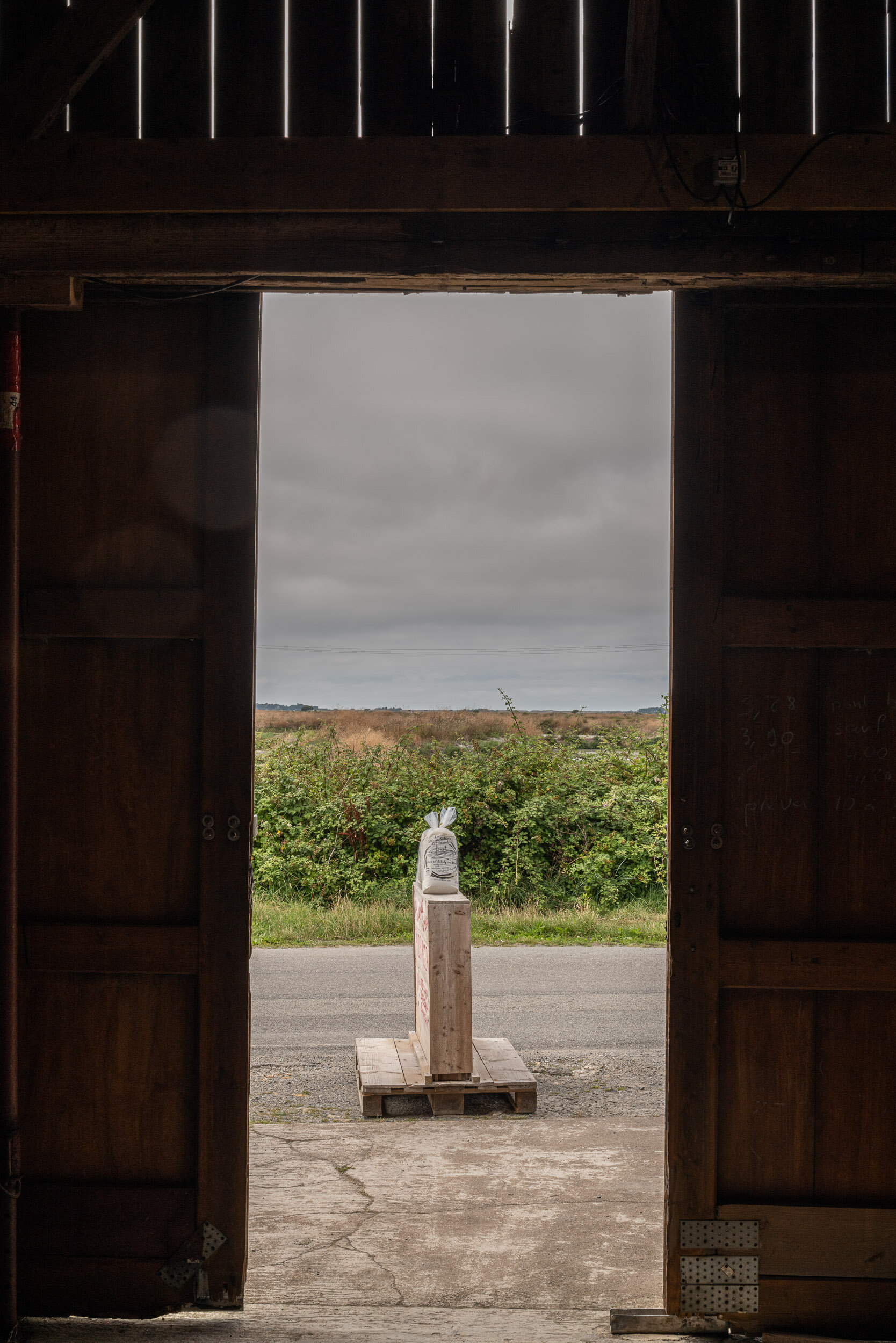Guérande salt
The salt of the sea
They're all freedom-loving. And a bit anarchistic. The salt farmers of Guérande in northwestern France. Salt used to be white gold. So it's no surprise that the beginnings of salt production in Brittany date back to the Neolithic period. The approximately 2,000-hectare salt marshes of Guérande are the largest of their kind. Around 300 salt farmers, known locally as "paludiers" (from the Latin word "palus," meaning marsh), cultivate the plots. Most of them belong to a cooperative; only a handful market the salt themselves. Pascal and Delphine market the salt themselves (see also their website www.sel2guerande.com ).
With a deft hand, Pascal wields the "las," a wooden scraper with a very long handle. He uses it to pull the salt that crystallizes at the bottom of the basin out of the water. It's all done by hand. No machines. Pascal likes it. This allows him to support himself with minimal overhead. Independent. A little wild and anarchic, in fact. He's his own boss and can organize his working hours himself. The salt harvest itself can only take place in good weather. That's around 40 days a year. In this short period, he and two seasonal workers dredge up to 150 tons of salt from the basins. That's sometimes 4,000 kg per day, which has to be transported by hand from the fields in wheelbarrows. The "normal" salt, the gros sel, has a slightly grayish color because the salt crystals combine with the minerals of the clay in the basins. This makes the white gold somewhat grayish, but even more nutritionally valuable. Each salt miner piles up his salt in a mountain next to his fields. From time to time, the mountain is transported by truck to a storage depot. When it rains, the depot must be covered, otherwise the white gold melts and is lost.
While Pascal and his seasonal workers pull the bulk sel from the basins, Delphine skims the fleur de sel with a deft hand. Unlike regular salt, it crystallizes on the water's surface, has larger crystals, and is somewhat milder. It is the most valuable salt. In upscale restaurants, it is served on the table so that guests can add a special touch to their dishes with the fleur de sel.
Every salt tastes different. Salt can smell clean, musty, or bitter. It can taste mild, sharp, or pungent, like seaweed, clay, or earth. Fleur de Sel de Guérande is highly sought after for its delicate violet scent.
White gold brought wealth to Guérande. This naturally also attracted the attention of the powerful. In 1343, King Philippe VI of Valois secured the salt monopoly by decree and introduced the "gabelle," or salt tax. This, in turn, brought smugglers, the "faux-saunier," into play. They bought salt in Brittany, which was still independent of France at the time, and then resold it in Maine—in France—after "importing" it without paying the salt tax. They risked being sentenced to service on the galleys if they worked unarmed, and the death penalty if they carried weapons. After numerous popular uprisings, the salt tax was finally abolished by the Constituent National Assembly on December 1, 1790.
In the 1960s, the Guérande salt fields declined in importance due to advancing industrialization and the associated rural exodus of young people to larger cities. It was the "babacools," dropouts and hippies, who, in search of a life closer to nature, rediscovered the ancient cultural landscape in the 1970s and revived salt production techniques with the support and knowledge of the elders.
And when you see Pascal with his hat on while packing the salt, he also has a certain "babacool" air about him. With a satisfied smile, he seals bag after bag, knowing that he is his own boss and that the white gold is loyal to him and his family, providing them with everything they need.
All images (except for the drone photos) were taken with the Leica SL2 and the three SL zooms 16–35, 24–90 and 90–280 mm.












































